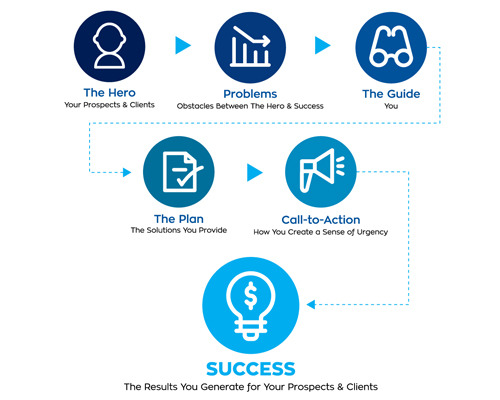Partner with BBTS for a successful SyteLine / CloudSuite Industrial (CSI) ERP system implementation - guaranteed - to grow without adding headcount
Don't wanna be here? Send us removal request.
Text
Why Infor SyteLine ERP Is Ideal for Mid-Market Manufacturers & Service Providers

When electronics and other mid-market manufacturers want their ERP system to enable growth and create a new competitive advantage, they rely upon Infor Infor SyteLine, also known as CloudSuite Industrial (CSI).
When service and rental equipment providers want their ERP system to enable their growth into world-class service organizations and empower field technicians with data at their fingertips, they also rely upon Infor Infor SyteLine CSI.
We’ve all heard the horror stories of failed ERP implementations so, when manufacturers and service providers want SyteLine ERP successfully implemented—and guaranteed—they rely upon Bridging Business Technology Solutions (BBTS).
An ERP Ideal for Manufacturers
Infor SyteLine is the primary ERP we support because it’s ideal for use by discrete and process manufacturers, especially electronics manufacturers. We also guarantee the success of your Infor SyteLine implementation whether you’re commissioning an ERP system for the first time or replacing your current system, so you can cross the risk of a failed implementation off your list of worries.
SyteLine also can be customized to recognize customer-owned inventory and allocate it only to that customer so you don’t have a unique part number for the same part used by multiple customers. You can also reserve stock for specific products of the same customer or reserve any part in your inventory for a specific order until the order is released.
SyteLine delivers the same type of functionality as SAP and Oracle for a fraction of the cost and headache of implementing a tier 1 ERP system.
An ERP Ideal for Service Providers
Infor SyteLine is the primary ERP we support because it’s a perfect fit for service providers, especially those who rent equipment. We also guarantee the success of your Infor SyteLine implementation. So, whether you’re commissioning an ERP system for the first time or replacing your current system, you don’t have to worry about the disruption of a failed implementation.
Among the biggest benefits of SyteLine for service providers is no longer having to enter data multiple times into disparate systems. Working with common data means that everyone works from the same real-time information, which:
Empowers your service technicians to complete more service orders
Enables your employees to spend more time building relationships with customers
Gives your managers the tools to analyze data and find strategic growth opportunities
SyteLine delivers the same type of functionality as SAP and Oracle for a fraction of the cost and none of the headaches associated with implementing a tier 1 ERP system.
Successful Implementations, Guaranteed
The BBTS team has implemented SyteLine successfully over 165 times since 2013 with a proven ERP implementation process that begins with improving inventory control, planning and forecasting, financial close, and other business processes. SyteLine then standardizes these process best practices and ensures they are followed.
BBTS also provides post-implementation SyteLine enhancements, upgrades, business process improvements, and workflow optimization so you get the most out of your SyteLine investment.
Get Started Today
To determine if SyteLine ERP is right for you, we will connect you with one of our implementation experts as part of a process review. A successful implementation begins with understanding your core business processes, then recreating and evolving them in SyteLine.
Together, we can determine how you will benefit from SyteLine and calculate a target return on investment (ROI) to help justify the move. Contact us to learn more about SyteLine and how we are able to guarantee a successful ERP implementation when so many fail. You can also take advantage of the process review offer.
#erp software#infor#syteline#cloudsuite industrial (CSI)#manufacturing#service providers#customer owned inventory
8 notes
·
View notes
Text
Why Your B2B Business Needs Brand Storytelling & How to Make It Happen

Your brand may be built around your solutions, but it’s not just a product or a service.
It’s part of a story you share with your prospects and customers.
Your prospects might be interested in your products and services, but what they’re really want is a solution to their problems and whatever else prevents them from achieving their business goals.
And while you might have terrific solutions, the most effective story you can tell prospects is not the story of how great you are. It’s their story – the story of how they will overcome the obstacles standing between them and their goals, with you as their trusted guide. Anyone can try to sell them something. You want the opportunity to serve them as a trusted guide and partner.
That is the essence of brand storytelling, as well as the essence of every good story.
There’s a hero (your prospect), a guide (that’s you), and a daunting problem that must be solved before the hero can reach their goal.
Brand storytelling works because of a simple but often overlooked principle of effective B2B marketing: prospects need to know that you understand their needs and challenges and can connect the dots between their problems and your solutions.
Here’s what you need to know to make your B2B brand story resonate powerfully with your audience, generate leads, and fuel your growth.
Avoid Traditional Marketing Traps
Start by leading with the problems you solve and the opportunity created as a result.
Traditional marketing leads with products, services, features, and benefits. When you speak too soon or too much about the features of your products or services, it comes across as pushy self-promotion because you have not yet established your credibility or earned their trust.
When your content demonstrates your understanding of their problems and your ability to solve them, you build credibility. Case studies, reviews and testimonials are a good example of content that provides the “social proof” of your problem-solving capabilities.
Traditional, promotional marketing can feel like sitting across from a date who spends the entire evening talking about themself.
Self-congratulatory content in particular—being the “top” or “leading” provider, whatever Gartner quadrant you fall into, and all the awards you’ve won—doesn’t generate leads because it doesn’t resonate, but effective brand storytelling does.
Identifying Pain Points
Brand storytelling should demonstrate your understanding of prospect problems.
To identify their pain points, here is what you can do:
Survey your current customers to understand what led them to you and what impact your solutions have had on their business
Conduct secondary market research by reviewing the web where people are discussing their problems: reviews of competitors, discussion boards (e.g. Reddit, Vistage community boards, and industry websites)
Spend more time asking prospects about the effects of their biggest problems and what they want to achieve
Conduct primary market research by interviewing pre-qualified prospects to see if they have the problems that you solve and what they think of your solutions
Note: no market is homogenous – it’s important to segment your target markets by their unique requirements. Many may have the same type of problem but each segment may value aspects of your solutions differently (e.g. specific compliance requirements, how much they are impacted by the problem, price sensitivity, whether they are end-users or resellers, etc.)
Once you’ve identified the common problems that your brand solves, storytelling gets a lot easier because that is center of your brand story.
3 Steps to Telling the Story of Your B2B Brand
Now that you know the pain points you want to incorporate into your storytelling, it’s time to incorporate them.
No two brands are exactly alike, so no two stories are exactly alike but there are commonalities in the storytelling process for B2B brands.
Step 1: Lay the Foundation
Revisit your foundational messaging by going through the brand story process. There’s no better place to start implementing it than on your home page – it’s recommended that you keep your design language in place (it doesn't need to be a web redesign project) but it’s critically important to recreate the content, which is often overly focused on self-promotion and features/benefits.
Rework your About page and main solution pages. Then create a company boilerplate of 100 words, an elevator pitch of 100 characters, and a tagline of just a few words, incorporating the essence of your brand story in each.
Step 2: Develop Educational Thought Leadership
Develop interesting and educational thought leadership that helps prospects understand what will solve their problem and who is best to solve it. You will have more credibility if you acknowledge that your solutions aren’t the best fit for every prospect and circumstance. This will also help you appeal to those who are the right fit for your services.
Foundational web pages, blogs, case studies, guides, and ebooks that educate prospects on how your solutions solve their problems all help generate leads. Promotional content like company news and awards is fine, as long as it’s surrounded by thought leadership.
Step 3: Spread the Word
In virtually any market, the number of prospects actively searching for your solutions will be outnumbered by those who aren’t, so it’s important to send some thought leadership out into the world: email campaigns, direct mail, events, content syndication, and earned PR (published articles and speaking opportunities that can’t be purchased – you have to earn them with a successful pitch to publication editors or industry associations).
B2B Brand Storytelling Implementation Example
Below is an example of a professionally designed website that looked good but didn’t resonate well with prospects because of its focus on making bold claims without explaining how problems would be solved or how its solutions would work. Today, a brand story-focused website generates more leads and is the result of a successful storytelling approach.
Before
After
Ready to Improve Your B2B Storytelling & Grow Your Business?
While there is some art to storytelling, it’s a repeatable process that you can do yourself.
However, it’s hard to be effective at something if you haven’t done it before or don’t have the time or resources to commit to it. Agencies like Innovaxis specialize in B2B storytelling. In fact, Innovaxis offers a B2B Brand Storytelling Workshop to help you get started.
14 notes
·
View notes